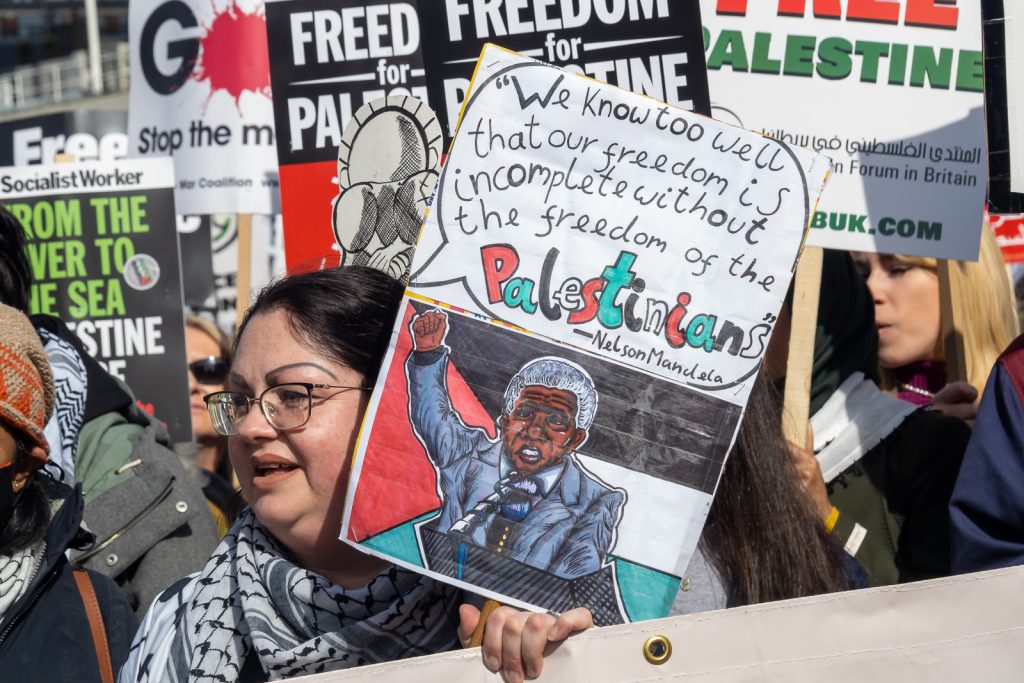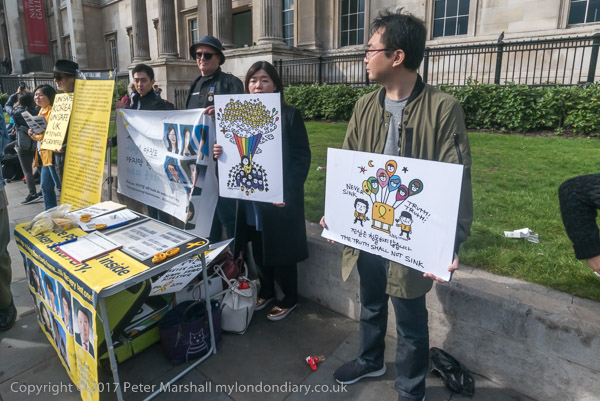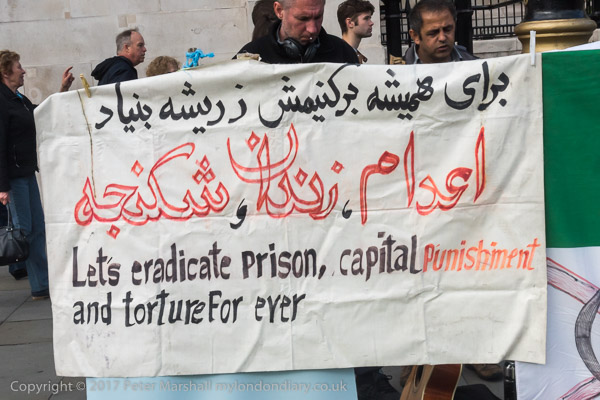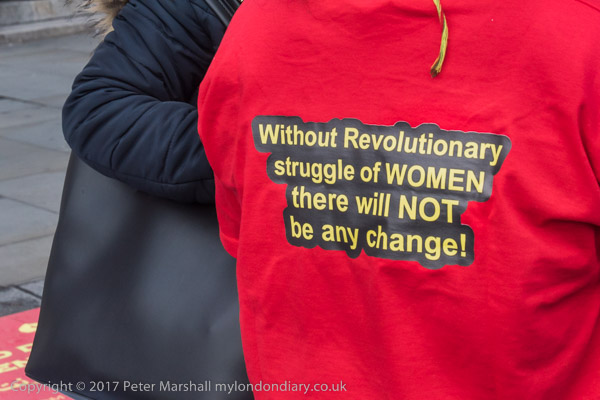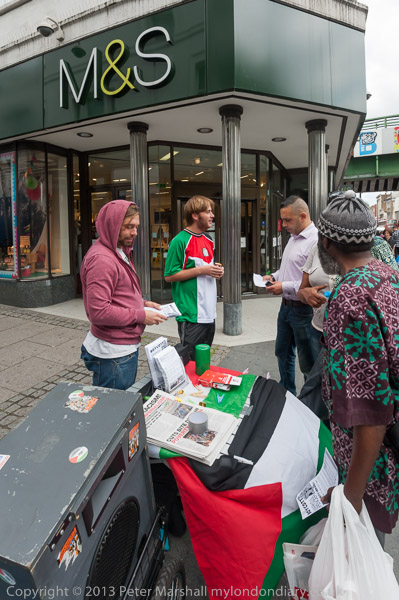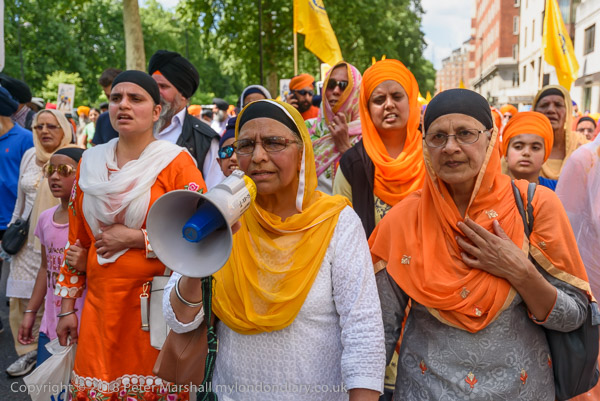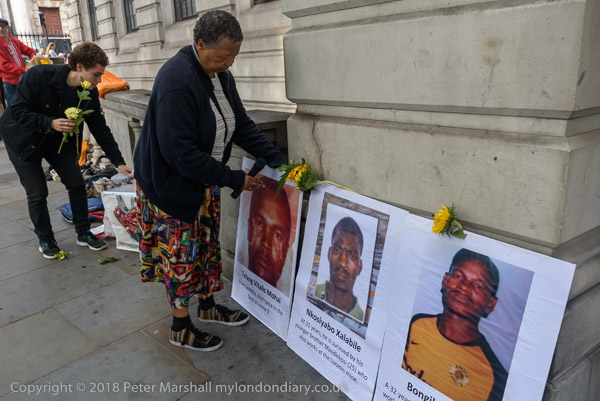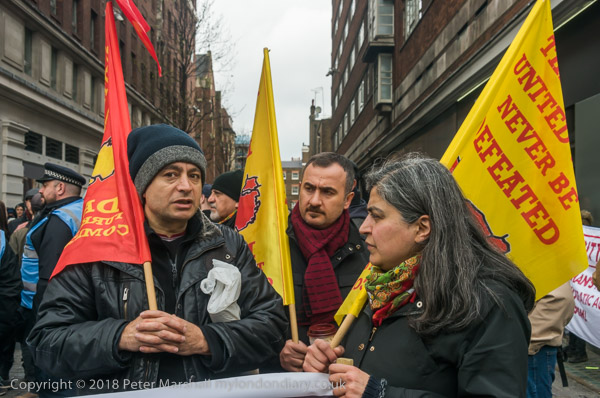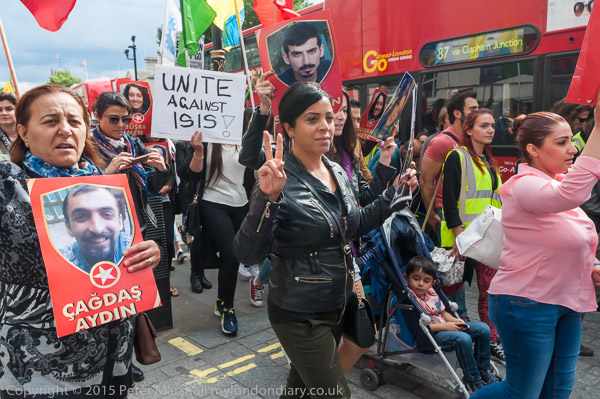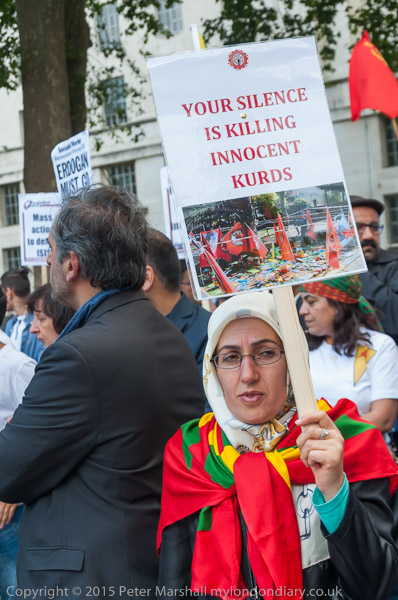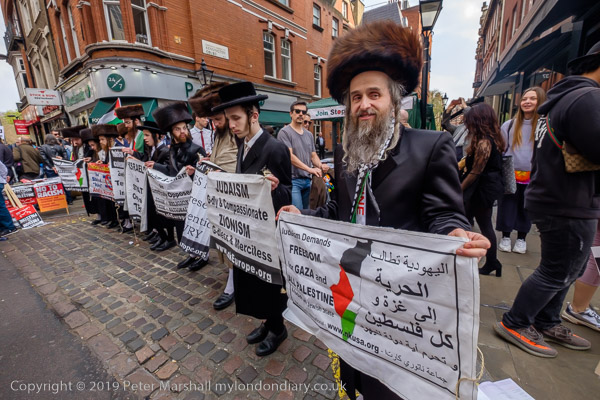Nakba, NHS, Guantánamo, Sri Lanka: On Saturday 18th May 2013 I began work outside Parliament at a protest against Israeli ethnic cleansing of Palestinians, then went across the Thames to the Festival Hall for the start of a march to defend the NHS before going the US Embassy in Grosvenor Square for a ‘murder scene’ in solidarity with hunger strikers at Guantánamo. There I also photographed a woman protesting for the release of her husband arrested 9 years ago by US forces in Iraq. Finally I met a march by several thousands of Tamils calling for and end to the continuing genocide in Sri Lanka. You will find much more detail (and many more pictures) on each of these protests at links below to My London Diary.
End Israeli Ethnic Cleansing – Old Palace Yard, Westminster

65 years after 700,000 Palestinians were driven out of their homes as refugees in the ‘Nakba’ (catastrophe) when Israel was created, Palestinians call for an end to the continuing ethnic cleansing and a boycott and sanctions until Israel complies with international law.

Several hundred people came to the protest, including a group of extreme orthodox Neturei Karta Jews who see themselves as guardians of the true Jewish faith, and reject Zionism, as well as many of Jewish or Palestinian origin. As well as the Palestine Solidarity Campaign the protest was also supported by many other groups – a long list on My London Diary – and speeches were continuing when I left for another event.

More about the Nakba and the protest at End Israeli Ethnic Cleansing.
London Marches to Defend NHS – South Bank to Whitehall
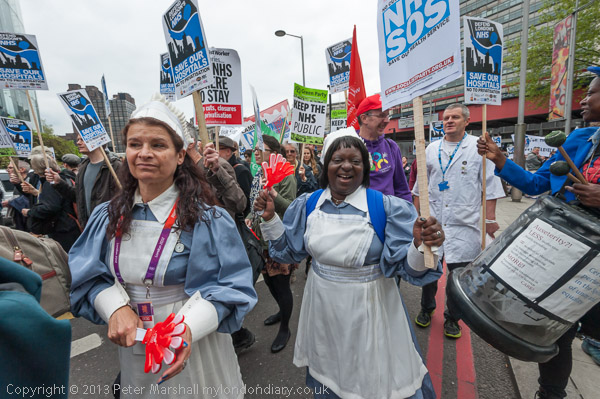
Thousands had gathered by the Festival Hall to march against cuts, closures and privatisation of the NHS, including many groups opposed to hospital closures around London, trade unionists and others concerned the the government is ending the NHS.

An unprecedented coalition of Londoners, including medical staff, trade unions, health campaigners, patients and others have been alarmed at what they see as an attack by the government on the principles that underlie our National Health Service and the threats of closure of Accident and Emergency facilities, maternity units and hospital wards which seem certain to lead to our health system being unable to cope with demand – and many lives put at risk.

You can read more about the crisis in the NHS in 2013 in the post on My London Diary, but of course this has continued and is still making the news. Despite their protestations it seems clear that the Tories are trying hard to run down the NHS so that the population lose its trust and love for our universal free public – and would allow them to eventually replace it with US-style insurance based healthcare which would greatly increase costs and generate huge profits for private health companies.
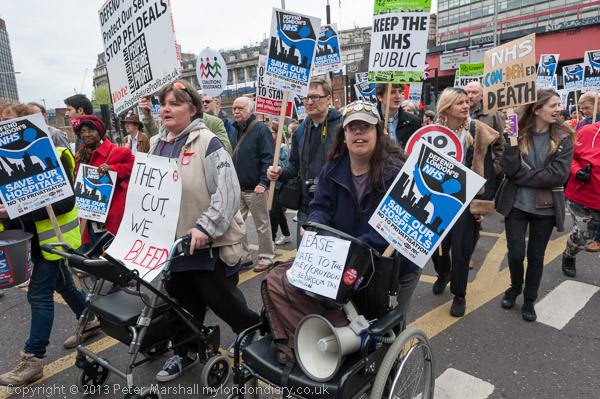
I went with the march across Waterloo Bridge and down Strand to Charing Cross, leaving it as it was waiting to enter Whitehall for a rally there.

More information and pictures at London Marches to Defend NHS.
Guantánamo Murder Scene – US Embassy, Grosvenor Square

London Guantánamo Campaign staged a ‘murder scene’ at the US Embassy on the 101st day of the Guantánamo Hunger Strike in which over 100 of the 166 still held there are taking part, with many including Shaker Aamer now being forcibly fed.

As I arrived there were 8 black-hooded ‘prisoners’ in orange suits lying on the pavement, the number of prisoners who have died there in suspicious circumstances who had previously taken part in sustained hunger strikes. At least seven of them had the cause of death reported as ‘suicide’.

Other protesters drew lines around the bodies on the ground and surrounded the area with ‘Crime Scene – Do Not Enter‘ incident tape. The bodies then stood up and there was a short enactment of forced feeding by a man wearing an Obama mask.

Others held placards and posters, some including quotations from Thomas Jefferson and other historic and prominent Americans, and there were speeches about the events in Guantanamo, where British resident Shaker Aamer was still held despite having been cleared for release. You can read more, including a statement by one of the organisers, on My London Diary.
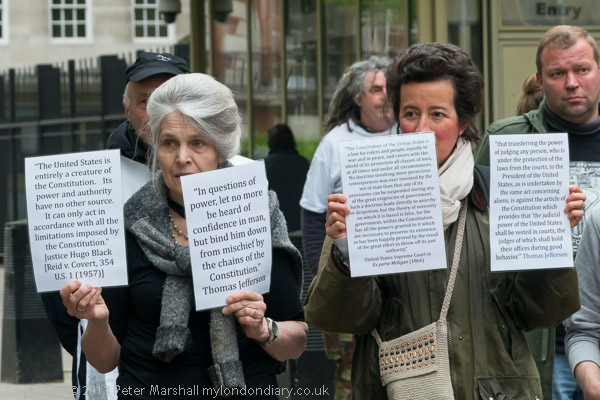
As I left some of the poems written in Guantánamo by Shaker Aamer were being read.
More at Guantánamo Murder Scene.
More US Embassy Protests – US Embassy, Grosvenor Square

Also protesting outside the embassy as she has for a number of weekends was Narmeen Saleh Al Rubaye, born in the US and currently living in Birmingham, whose husband Shawki Ahmed Omar, an American citizen, was arrested in Iraq by American forces in 2004 and turned over to Iraqi custody in 2011. He was tortured by the Americans when held by them, and his now being tortured by the Iraqis. He is also on hunger strike. His young daughter Zeinab came and spoke briefly to the Guantanamo protesters, telling them that she wanted her daddy to be released.

Later she was joined by a small group of Muslim men and boys who stood with her.

It was a busy day for protests at at the US Embassy were a small group of supporters of Syrian President Assad, including some from the minor Communist Party of Great Britain (Marxist-Leninist) who had come to protest against western intervention in Syria.
More about these protests at More US Embassy Protests.
Tamils protest Sri Lankan Genocide – Hyde Park to Waterloo Place
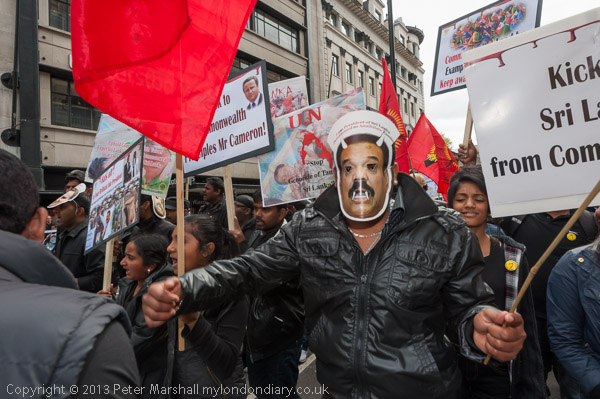
Finally I rushed away to join thousands of British Tamils and dignitaries and politicians from India, Sri Lanka and the UK who were marching through London on the 4th anniversary of the Mullivaikkal Massacre. Many were dressed in black in memory of the continuing genocide in Sri Lanka and some wore the tiger emblem and called for a Tamil homeland – Tamil Eelam.

Tamils are disgusted at the lack of response by the UK, the Commonwealth and the world to the organised genocide that took place and is still continuing in Sri Lanka, of which the massacre at Mullivaikkal four years ago was a climax. I noted on My London Diary that I could see no other non-Tamil photographers covering the event.

On My London Diary you can read a statement by the British Tamil Forum who had organised the march. I left as the rally in Waterloo Place was about to start, partly because I was tired but also because I thought few of the speeches would be in English.
Tamils protest Sri Lankan Genocide.
Flickr – Facebook – My London Diary – Hull Photos – Lea Valley – Paris
London’s Industrial Heritage – London Photos
All photographs on this page are copyright © Peter Marshall.
Contact me to buy prints or licence to reproduce.






